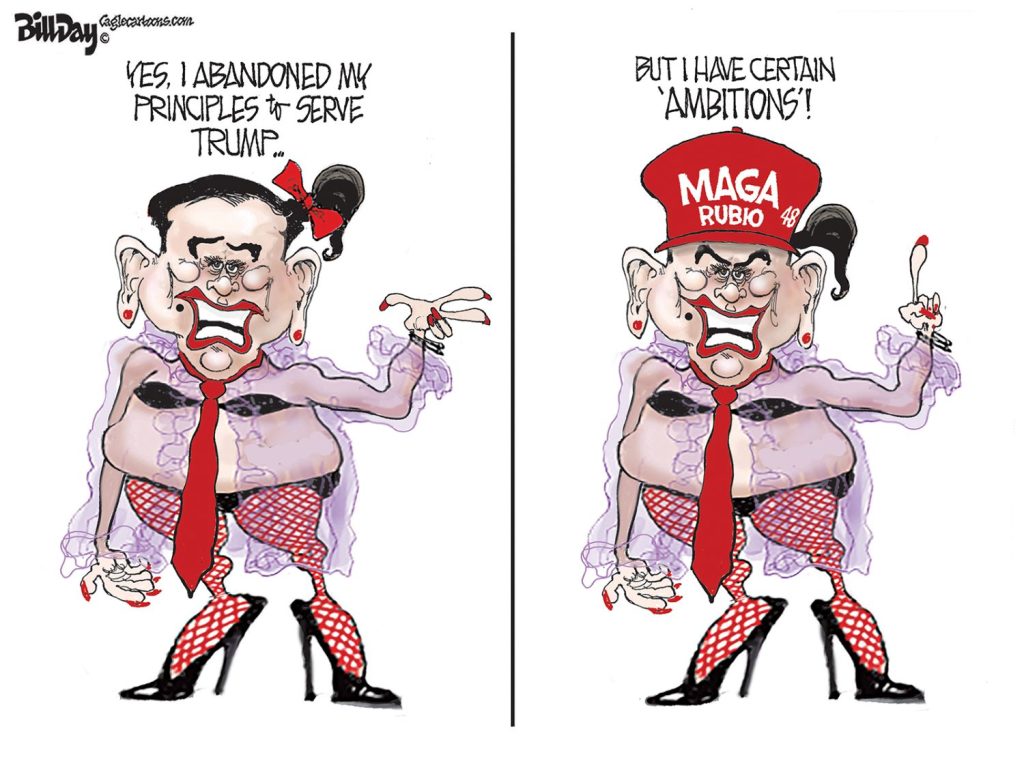Our media air waves and political squares are dominated by talk about all kinds of issues, but they are largely silent on the single issue that ultimately has the power to kill our region – the economic disparities that are also economic drags on our community.
It’s the elephant in the room but we seem largely focused on why there are peanuts on the floor.
Meanwhile, the gaping gaps in incomes, unemployment rates, and opportunity between whites and people of color pull down the economic vitality of this region, undermine its Gross Domestic Product, and trap too many people without the means for a reasonable standard of living.
Before we continue, let us emphasize again that we are talking about the MSA, not just about Memphis. That’s because the problems that are regularly topics of concern here are also found throughout the region.
A Tale of Two Regions
It’s one of the primary differences between our region and others. When we drive out of the core county in Atlanta, Indianapolis, Nashville, or Louisville, we drive into counties with dramatically higher median household incomes and higher educational attainment. But here, when we drive outside Shelby County and into the region, poverty remains a nagging problem, median household incomes do not dramatically increase, and educational attainment goes down.
For example, snuggled up south of Nashville-Davidson County is the “bedroom county of preference,” Williamson County, where median household income is $90,000, the median value of owner-occupied houses is $335,000, 53% of people older than 25 have bachelor’s degrees or higher, and the poverty rate is 5.7%. Those indicators are dramatically better than Nashville-Davidson County where median household income is $47,335, median value of houses is $167,500, 36% of people older than 25 has bachelor’s degrees are higher, and poverty rate is 18.5%.
Snuggled up south of Shelby County is our “bedroom county of choice,” DeSoto County, where median household income is $58,505, the median value of owner-occupied houses is $152,600, 21.6% have bachelor’s degrees or higher, and the poverty rate is 10%.
Stating the obvious: DeSoto County is no Williamson County.
Its indicators are only marginally better than Shelby County, where the median household income is $46,250, the median house value is $132,700, 29% of people older than 25 have bachelor’s degrees or higher, and the poverty rate is 21%.
Breaking The Disparities
It’s those unexciting Memphis MSA numbers that result in a smaller, less robust consumer market here. Meanwhile, in Nashville, restaurants, concerts, and sports events are fueled by a region much wealthier than ours and whose residents expand the Nashville/Davidson County economy with their spending.
But all that is just context for the point of this post, which is about how economic disparities are baked into our MSA and how we pay a heavy price as a region for our inability to break the link between people of color and inequality. If nothing changes, things will get much worse, according to projections prepared by Woods & Poole Economics Inc. for PolicyLink.
From 1980-2010, the number of people of color in the MSA went from 42 percent to 53.8 percent of the total population. By 2040, 66.1 percent of the region’s population will be people of color.
From 2000-2010, the Latino population had the highest growth rate at 130.3 percent and the White population had the lowest at -2.7 percent. African American population grew by 14.6%, Asian population grew by 53.3% and mixed/other grew by 49.4%.
The Imperative: Break The Link Between Color And Disparities
Here’s the percentage of the population projected to be people of color in 2040 (2010 percentages are in parentheses)
66.1% – Memphis MSA (53.8%)
79.4% – Shelby County (61.3%)
46.8% – Desoto County (29.6%)
68.6% – Crittenden County (54.8%)
26.4% – Tipton County (23.3%)
80.8% – Tunica County (76.9%)
28.4% – Fayette County (31.8%)
The Memphis region has always been on the leading edge of the movement toward an American defined by its diversity. While the majority of United States population will be people of color in 2040, our MSA will be leading the pack as a majority minority region. By 1980, 42% of the population of the Memphis MSA was people of color; 1990, it was 42.8%; 2000, it was 48.1%; 2010, it was 53.8%. It is projected to be 57.8% by 2020 and 62.1% by 2030.
People of Color Percentages
While two out of three people in the Memphis MSA will be people of color, there are other MSAs where the percentage is even greater, but they are largely in metros where growing Latino population is driving their diversity. In fact, for cities where African Americans are the dominant indicators of diversity, the Memphis MSA is likely to have the largest percentage.
Projections for 2040 for selected MSAs for percentage of population that will be people of color:
79.5% – Los Angeles MSA
76.9% – Miami MSA
75.2% – Houston MSA
69.6% – San Antonio MSA
66.4% – Orlando MSA
66.1% – Memphis MSA
59.6% – Atlanta MSA
57.7% – Dallas MSA
53.6% – Phoenix MSA
53.0% – New Orleans MSA
45.8% – Birmingham MSA
42.6% – Detroit MSA
39.3% – Nashville MSA
23.5% – Chattanooga MSA
19.0% – Knoxville MSA
The Battle Lines Are Drawn
Back to our main point, if the Memphis region is unable to change the economic disparities at the heart of our economy and the way that race and poverty are linked, our economic prospects will be crippled at the exact moment that the international economy will become ever more complex and challenge our ability to compete.
At the time of the legendary Memphis Jobs Conference in 1979, the fact that the income for a white Memphian was twice that of a black Memphian was acknowledged as a discrepancy that limited our potential for the future and demanded concerted attention. That future is today, that same income disparity remains, and the prediction has been made manifest.
To close the disparity, the average annual income would have to be $23,325 higher for the African American population and $26,178 higher for the Latino population.
In 2014, the median wage for workers of color remained $7 an hour less than the median wage for white workers – $22 to $15. Today, 72% of white workers earn at least $15 an hour but only 46% of people of color. Those are the same levels as 1980, which indicates two things: 1) the structural erosion of middle class incomes and 2) the faster pace of low-wage job creation. In fact, from 1990 to 2012, the number of low-wage jobs in our MSA increased 39.5%, compared to 9.5% for middle wage jobs, and 18.9% for high-income jobs. By 2020, 36% of jobs will require an associate degree or higher.
In other words, closing income disparities is the Memphis region’s biggest economic opportunity. If the racial gaps in income are closed, the regional economy would be $20.89 billion larger – which means that it would be about one-third larger than it is today.
In other words, the ultimate challenge for the Memphis MSA is to disrupt trajectories that have appeared to be locked into place. More than anything, the trend lines for the past 35 years indicate that at best we have been running in place, and at worst, we are losing ground to our peers.
**
Join us at the Smart City Memphis Facebook page for daily articles, reports, and commentaries relevant to Memphis.





We do these sorts of analyses many different ways. I was impressed with this one. I liked the comparison of Nashville’s and Memphis’ suburban communities. Two issues: (1) Using population projections to 2040 is somewhat deceptive. In todays world with changing demographics and with changing fertility among demographic groups, it may mean that long term projections are particularly unreliable. (2) I am increasingly feeling that using race for a proxy for poverty and/or marginalized status is quite misleading about the nature and sources of inequality. As the many books recently about the white working class illustrate, people of color are not alone in finding the 21st century job market a difficult one to succeed in. The essay above notes that job creation has been biased toward low-skill, low pay, low benefit jobs in the recent decades. In most cases workers in these new (service) jobs have little bargaining power to increase the quality of their work experiences. These problems — which affect a majority of the communities of people of color — are not unique to these communities, nor is the source of the suffering or poverty traceable to those communities. So using race may just confuse the analysis and lead to the conclusion that ‘something’ needs to be done with or for this or that people of color. I don’t think more education, better housing, etc. will solve the income problem here or elsewhere.
Tom, here we go again, always comparing Memphis to Nashville. I remember that you wrote and advised not to do that.
The bottom line is that Nashville and its many surrounding counties are much wealthier than anything here. Williamson County is one of the richest and fastest growing counties in the entire US. We were in Nashville over Christmas and its simply amazing how much new development is under construction. Cranes everywhere. Hotels, apartments, condos, skyscraper office towers, new and expensive residential development everywhere. It’s not just in a few areas, it’s everywhere!
And here we are in Memphis with so little happening in comparison. We are stuck in a poorly run, poverty and crime filled backwater. We will simply never be able to close the income gap.
David: We agree with all that you say. The challenge for the Memphis MSA is to get to the point when race and poverty are not linked. That was the point I was trying to make.
Hartz:
We used Nashville, but as we wrote, it applies to Altanta, Louisville, and Indianapolis. We are an anomaly for most regions, where more wealth and higher education is in the adjacent counties rather than in the core county. As for development, the good news is that Memphis is the site of an awful lot of investment and plans right now. The even better news is that we have not sacrificed a sense of place and scale to get there. Nashville seems intent on replicating Atlanta’s soulless, characterless personality.
I prefer the growth and development of a dynamic city like Nashville or Atlanta any day over the backward, small town stuff we’ve been left with here in Memphis. Growth means jobs and opportunities and Memphis just don’t have much if that anyway you look at it. Compared to other cities Memphis is third rate and only a place bright young people want to leave to live and work.
You aren’t bright and you may not be young, but I sure wish you’d join them.
As someone who has studied Memphis for awhile, I think that Memphis should be the best Memphis that it can be. Civic comparison is natural but most cities have attributes that define them for what they are and could be. Geography, people, food, music, etc. That doesn’t mean that civic planners should not take the best ideas from successful other cities but it does mean that not everything will work or work as it has worked in other cities.
Case in point, many cities now look to Whole Foods to be a focus to jumpstart impoverished areas. That may work in select cities that have high disposable incomes but it will not work everywhere. Wal-Mart may be a replacement or any other major grocery (or well-funded regional) store in poor(er) areas.
Memphis/Shelby County is unique in Tenn. in that the majority of the metro area is in Memphis/Shelby county. That provides opportunities that other metro areas do not have. A unified transportation system could be developed that could connect the major employers in the county/city to the residential population.
Also, just as an aside, Williamson County has quite a few of country music (stars), living in that county. I am sure that it boosts that county’s income stats. beyond the average. So, I am not sure that I would compare it to the suburban Memphis metro counties.
Best wishes in the new year and keep up the good work on developing your natural talent.
In-State Anonymous: Thanks for the comments. Very helpful discussion.
As for Williamson County, every other city other than Nashville has county(ies) outside core county that significantly surpasses it in incomes, housing values, etc. We used the median, not average. That’s the point we were trying to make. We don’t have that here which is a significant drag on our economic potential…although these counties think that it’s Memphis that’s the problem.
Amen to your comment about a unified Shelby County transit system.
There could be several (even many) different reasons that race and poverty seem to be linked (at least casually), but you don’t mention them or how to deal with them. What do you propose?
http://www.smartcitymemphis.com/2016/08/memphis-loses-chance-to-be-national-leader-in-poverty-reduction/
http://www.smartcitymemphis.com/2016/08/center-for-neighborhood-technology-recommendations-to-reduce-memphis-poverty/
http://www.smartcitymemphis.com/2016/09/blueprint-for-prosperity-priorities/
http://www.smartcitymemphis.com/2016/09/blueprint-for-prosperity-part-two/